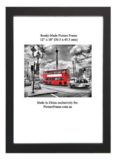So, you’ve been doodling, drawing, painting, sculpting, modelling, welding, photographing or otherwise crafting your art for years. Now you are confident and read
 y and want the world to see your artistic works which deserves to be seen, viewed, admired and hopefully, sold. Having curated the picture framing and picture frames aspect of exhibitions for many years, we can suggest a few helpful ways towards your inaugural show and hence our post "Planning your first art exhibition". Plan your exhibition: It always pays to mindmap one’s art exhibitions, especially inaugural ones. You will find ituseful to both explore or ponder pertinent and strategic questions, some of which may be: What goals are you seeking to achieve? What atmosphere are you seeking to create, Will there be a social or community visual message or declaration? Will it be a small intimate event or a large public one? Will it be a solo or a group exhibition? Is the exhibition aimed for exposure and to promote your work? Or is it for charity? Each of these approaches may require different and varying approaches and are often best discussed with fellow artists and colleagues who have had prior experience. 2. Select a location: To be successful you are not required to be extravagant or flamboyant. The place where to exhibit art can literally be anywhere, but most often, it is held indoors, for obvious weather reasons. It can also be somewhere quite small, a vacant room at your local church or library, a stall ay your local Sunday Market. You local Real Estate Agent may make available to you a vacant shop for a weekend or two, at a cheaper rate than market rate. Most local councils have arts programmes support and it’s well worth contact their arts-co-ordinator or curator to see if they can help. Contacting local art societies and associations for suggestions and ideas is also often helpful with this, and other, art challenges. Fellow local artist may also know about local Open Studios locations, contacts, resources and help. The latter sources can also often prove quite useful to source government arts grants and sponsorships. 3. Pick a date and time: This is relatively easy. Weekends are generally the best time. Most exhibition attendees are likely to be at home and with some free time available to visit your exhibition. If planning your exhibition to be open in the evening, and night, do check and make sure that the venue you have in mind proffers sufficient and adequate lighting. Post-diurnal showing often proffer guests refreshments, therefore some catering may well be required. This goes a long way towards making attendees linger and hopefully, lead to sales. 4. Select what to show: Most artists are motivated by passion and are prolific creators. Finance and commonsense however, both dictate that you will not be able to show each and every piece you created. Curating the selection also entails not just choosing the pieces that you like, but also those which work well together, such as a common story, seasonal theme, or musical suite. And if you find it difficult to do this, ask a friend or fellow artist to help you with task. Your friend or colleague will not be emotionally invested with the creation of your works and fill find it relatively easy to assist you in the choices to be made. 5. Frame your art: Most visual art exhibitions showcase drawings, watercolours, oil paintings, art on paper or other media which, by necessity, need to be placed inside especially made receptacles, most often made from wood, called picture frames. Broadly speaking there are two manners of picture framing art. The first is called custom picture framing, arguably the best, but also and by far, the most expensive. Again, and generally speaking, you would take each piece of art to a picture framer of your choice and consult with him, or her, to design and construct a frame for each. This could involve different colours, sizes, finishes and profiles for each one. If conservation standard are required, the price for frame could easily double in price. Just to put it in perspective, a matted A2-Size piece of art could cost anything from $220 to $480, depending on who the picture framer is and the standard required. On the other hand, a ready-made, matted A2-Size piece of art can cost as little as $28.85 provided the artist fit the art him or herself and a conservation standard is not required. It is up to you to inquire further and decide which of these two approaches best suit your needs and requirements. Yet another way to reduce costs is to contact your local picture framers and arts stores to see if they have any old, soiled, or used picture frames and-or picture framing materials that they might consider either donating or sell to you things at much cheaper prices than normal. 6. Invite guests: The whole reason and purpose to hold an exhibition is to have people attend and view your work. Then start by making an invitation list of anyone and everyone you would or even might like to come. Family, friends, colleagues, acquaintances even, can reasonably be included. A Facebook event page is not too difficult to publish, and the same can be done with other online media. A public notice or two pinned at your work Notice Board or local Supermarket won’t hurt either. And while you’re at it, 4A advertising pamphlets stuck to the inside of the local shops’ windows, may also help. 7. Make a catalogue: This isn’t absolute must, especially if your exhibition has few works and is small, but cataloguing it will add a touch of professionalism to your public display. A description of the art, the media used to create it, the size, the composition history, creation date and number produced, if not an original, your name and contact details, are all useful information. 8. Knowledgeable exhibition visitors do like catalogues and often use them to make notes and hopefully follow up with a purchase or commission. 9. Opening day: Do consider asking your mum, family, friends, or a professional caterer if the budget permits, so as to put together an opening night buffet. Refreshments with light alcohol would add towards everyone feeling welcome. Sound equipment to allow you to make a welcoming speech and light background music may also be quite apposite ideas. Thank you for reading our post "Planning your first art exhibition
y and want the world to see your artistic works which deserves to be seen, viewed, admired and hopefully, sold. Having curated the picture framing and picture frames aspect of exhibitions for many years, we can suggest a few helpful ways towards your inaugural show and hence our post "Planning your first art exhibition". Plan your exhibition: It always pays to mindmap one’s art exhibitions, especially inaugural ones. You will find ituseful to both explore or ponder pertinent and strategic questions, some of which may be: What goals are you seeking to achieve? What atmosphere are you seeking to create, Will there be a social or community visual message or declaration? Will it be a small intimate event or a large public one? Will it be a solo or a group exhibition? Is the exhibition aimed for exposure and to promote your work? Or is it for charity? Each of these approaches may require different and varying approaches and are often best discussed with fellow artists and colleagues who have had prior experience. 2. Select a location: To be successful you are not required to be extravagant or flamboyant. The place where to exhibit art can literally be anywhere, but most often, it is held indoors, for obvious weather reasons. It can also be somewhere quite small, a vacant room at your local church or library, a stall ay your local Sunday Market. You local Real Estate Agent may make available to you a vacant shop for a weekend or two, at a cheaper rate than market rate. Most local councils have arts programmes support and it’s well worth contact their arts-co-ordinator or curator to see if they can help. Contacting local art societies and associations for suggestions and ideas is also often helpful with this, and other, art challenges. Fellow local artist may also know about local Open Studios locations, contacts, resources and help. The latter sources can also often prove quite useful to source government arts grants and sponsorships. 3. Pick a date and time: This is relatively easy. Weekends are generally the best time. Most exhibition attendees are likely to be at home and with some free time available to visit your exhibition. If planning your exhibition to be open in the evening, and night, do check and make sure that the venue you have in mind proffers sufficient and adequate lighting. Post-diurnal showing often proffer guests refreshments, therefore some catering may well be required. This goes a long way towards making attendees linger and hopefully, lead to sales. 4. Select what to show: Most artists are motivated by passion and are prolific creators. Finance and commonsense however, both dictate that you will not be able to show each and every piece you created. Curating the selection also entails not just choosing the pieces that you like, but also those which work well together, such as a common story, seasonal theme, or musical suite. And if you find it difficult to do this, ask a friend or fellow artist to help you with task. Your friend or colleague will not be emotionally invested with the creation of your works and fill find it relatively easy to assist you in the choices to be made. 5. Frame your art: Most visual art exhibitions showcase drawings, watercolours, oil paintings, art on paper or other media which, by necessity, need to be placed inside especially made receptacles, most often made from wood, called picture frames. Broadly speaking there are two manners of picture framing art. The first is called custom picture framing, arguably the best, but also and by far, the most expensive. Again, and generally speaking, you would take each piece of art to a picture framer of your choice and consult with him, or her, to design and construct a frame for each. This could involve different colours, sizes, finishes and profiles for each one. If conservation standard are required, the price for frame could easily double in price. Just to put it in perspective, a matted A2-Size piece of art could cost anything from $220 to $480, depending on who the picture framer is and the standard required. On the other hand, a ready-made, matted A2-Size piece of art can cost as little as $28.85 provided the artist fit the art him or herself and a conservation standard is not required. It is up to you to inquire further and decide which of these two approaches best suit your needs and requirements. Yet another way to reduce costs is to contact your local picture framers and arts stores to see if they have any old, soiled, or used picture frames and-or picture framing materials that they might consider either donating or sell to you things at much cheaper prices than normal. 6. Invite guests: The whole reason and purpose to hold an exhibition is to have people attend and view your work. Then start by making an invitation list of anyone and everyone you would or even might like to come. Family, friends, colleagues, acquaintances even, can reasonably be included. A Facebook event page is not too difficult to publish, and the same can be done with other online media. A public notice or two pinned at your work Notice Board or local Supermarket won’t hurt either. And while you’re at it, 4A advertising pamphlets stuck to the inside of the local shops’ windows, may also help. 7. Make a catalogue: This isn’t absolute must, especially if your exhibition has few works and is small, but cataloguing it will add a touch of professionalism to your public display. A description of the art, the media used to create it, the size, the composition history, creation date and number produced, if not an original, your name and contact details, are all useful information. 8. Knowledgeable exhibition visitors do like catalogues and often use them to make notes and hopefully follow up with a purchase or commission. 9. Opening day: Do consider asking your mum, family, friends, or a professional caterer if the budget permits, so as to put together an opening night buffet. Refreshments with light alcohol would add towards everyone feeling welcome. Sound equipment to allow you to make a welcoming speech and light background music may also be quite apposite ideas. Thank you for reading our post "Planning your first art exhibition









I’m studying Art at Monash and planning my first exhibition before Christmas. I have to say that this post is very useful to me. While I did know some of the steps or stages detailed here, some I would not have thought of until I saw them mentioned here. The tip about framing picture in A-size ready made picture frames and poster frames is definitely worth keeping mind since custom picture frames are so expensive and I could not possibly afford them.
Helpful information. Thanks. I agree with previous commenter. Art on paper is expensive to frame and when you have 86 pieces to exhibit, as I do, then picture framing prices and picture frames costs start to be really important as they will use up most of my budget. I decided to standardize my art to A1 to A2 window-matted poster frames and A3 to A4 window-matted poster frames. I can buy these ready-made frames myself and save hundreds, if not a couple of thousands.